Hey friends – today we’re talking all about rapid classification in a whitewater paddling context. If you’re brand new to the whitewater world, basically we classify rapids on a scale from 1 to 6 based on their difficulty.
A Class I rapid is the easiest and a Class VI rapid is the hardest. In addition, there are swifts which are sections of moving water but not big enough to be a rapid – kind of like Class 0 rapids.
In this post, I’ll go into detail about each class of rapid. I’ll touch on the difficulty, the characteristics (water & obstacles) of each rapid class, the need for scouting and the ease of rescue.
I’ve included photos and videos for most of the rapid classes so you can see examples.
At the end of the post, I’ve also gone over what to consider when deciding to run a rapid and tips on improving your whitewater paddling so you can paddle bigger and better rapids!
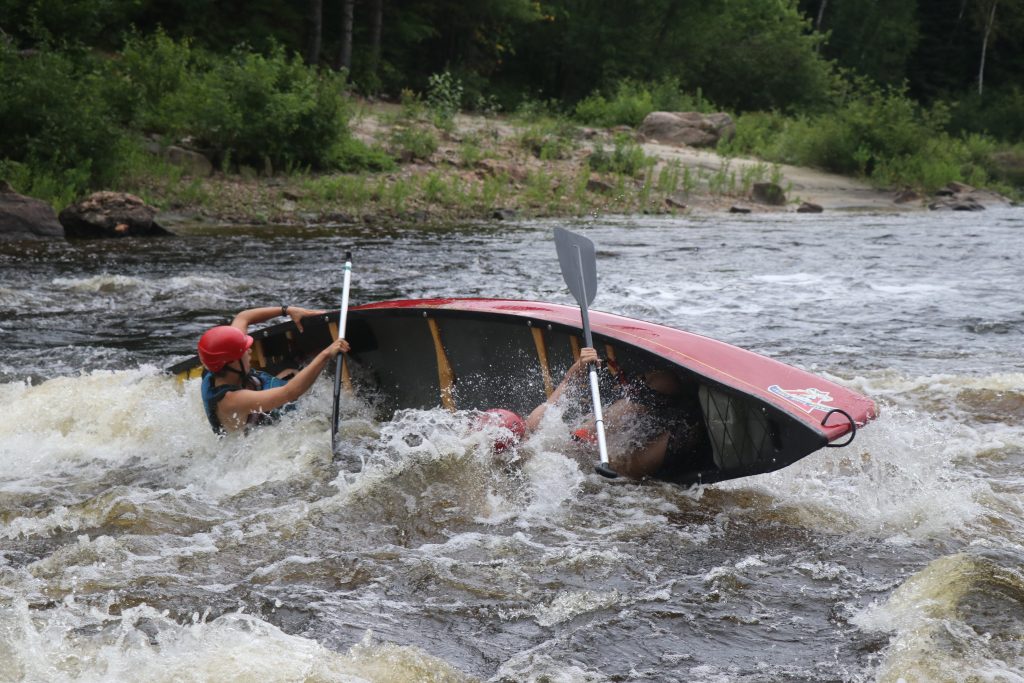
This post may contain affiliate links. If you make a purchase through one of these links, I may receive a small commission at no extra cost to you. Your support is much appreciated! You can learn more by reading my full disclosure.
Whitewater Rapid Classification
Whitewater rapid classification comes down to four factors: volume of water, gradient drop, the number of obstacles and the boat you’re paddling.
Generally speaking, small amounts of water flowing over small gradient drops are low classes of rapids. Meanwhile, lots of water flowing over a large gradient drop is going to be a high class of rapid.
If there are minimal obstacles in the rapid and you could paddle straight through it, we’d consider this to be ‘non-technical’. If there are lots of obstacles in the rapid (meaning you need to take a specific ‘line’ down the rapid), we call this a ‘technical’ rapid.
❗Quick Note: Remember that ‘lots of water’ means different things to different boats. Rafts can plow through rapids that would have huge water for an open canoe. I’ve included examples of rapids in the following section that are based on canoeing.
The definitions still work for rafts and kayakers, but their rapids look a little different. If you need a refresher, check out this post: Difference between Whitewater Kayaking, Canoeing and Rafting
Swifts / Class A Rapids
📈 Difficulty: Very Easy
🌊 Water & Obstacles: Swifts often happen in parts of the river where the river bed gets shallow or where the river narrows. The whitewater in a swift is created by super small waves from the fast moving water, unlike in a Class I or Class II rapid where the whitewater may be from water recirculating over a rock. There may be the occassional rock sticking out of a swift, but if there are lots of obstacles the rapid is probably a CI.
🔭 Scouting: Swifts typically aren’t scouted unless they are directly upriver to a bigger rapid or waterfall.
⛑️ Rescue: Rescues are very straightforward in swifts. If your boat tips, usually you’ll be able to just swim through the rapid and to the shore with ease.
Example: The photo below is from a swift on the Noire River. The river narrowed a bit, forcing the same amount of water through a smaller channel. This makes the water move faster and you’ll see little white waves. The waves aren’t big enough to go over the gunwales of a canoe and there are no obstacles to avoid. Easy peasy!
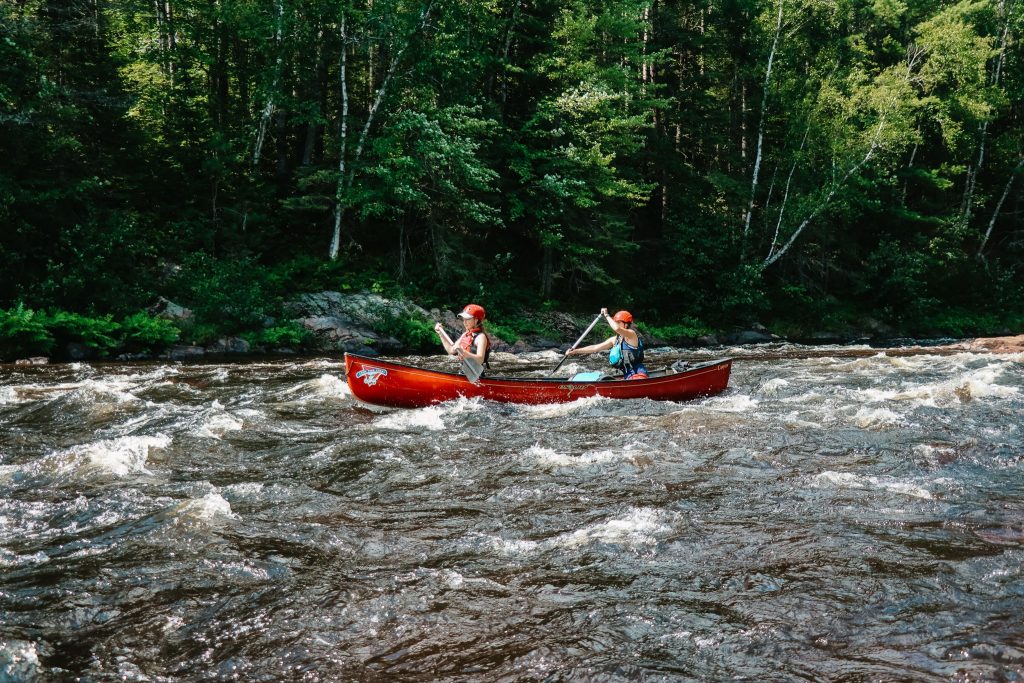
Class I Rapids
📈 Difficulty: Easy
🌊 Water & Obstacles: In a Class I rapid, the volume of moving water is pretty low, so even if a canoe were to get broadside, novice paddlers still probably wouldn’t tip. Typically, it’ll either be shallow and the biggest challenge is to avoid shallow or exposed rocks. In this case, you’ll need to set a specific line down the rapid to avoid the rocks, we’d call this a Class I Technical rapid. On the other hand, the river could be quite deep, where the water is moving a little faster but there aren’t any obstacles.
🔭 Scouting: Most CI rapids don’t require scouting.
⛑️ Rescue: Self-rescue is very straightforward in CI rapids.
Example: The first video below is from a short CI Technical on the Noire River. This is one of those rapids that is shallow, with lots of white aerated water from shallow rocks.
Example: In the second video, you can see that there’s a little more water volume and we’re going over a slightly larger gradient drop (though still pretty small), but there are no major obstacles to avoid. I’d call this one a CI.
Read More: A Beginner’s Guide to Scouting Rapids
Class II Rapids
When I’m deciding whether a rapid is a Class I or a Class II, here is what I think of: Is there anything in the rapid that could flip a boat of novice whitewater paddlers going straight? If there are some large waves that could fill the boat with water or large rocks they could hit, it’s probably a Class II.
📈 Difficulty: Moderate
🌊 Water & Obstacles: In a Class II rapid, there is enough water to flip a boat if it was to get broadside but not enough that you are likely to flip if the boat is always pointed downstream. There aren’t large standing waves or major obstacles (like holes or strainers) and the change is gradient is pretty small.
🔭 Scouting: Novice whitewater paddlers will definitely want to scout Class II rapids. Moderate – expert paddlers may or may not scout from the shoreline, but will likely scout from their boat upstream of the rapid.
⛑️ Rescue: Self-rescue is possible and not too difficult for moderately experienced paddlers.
Example: The rapid below is a Class II rapid because there is a slight gradient drop and enough water to cause a boat to tip (as illustrated). However, the rapid is really short and there aren’t any obstacles so it isn’t a technical rapid.
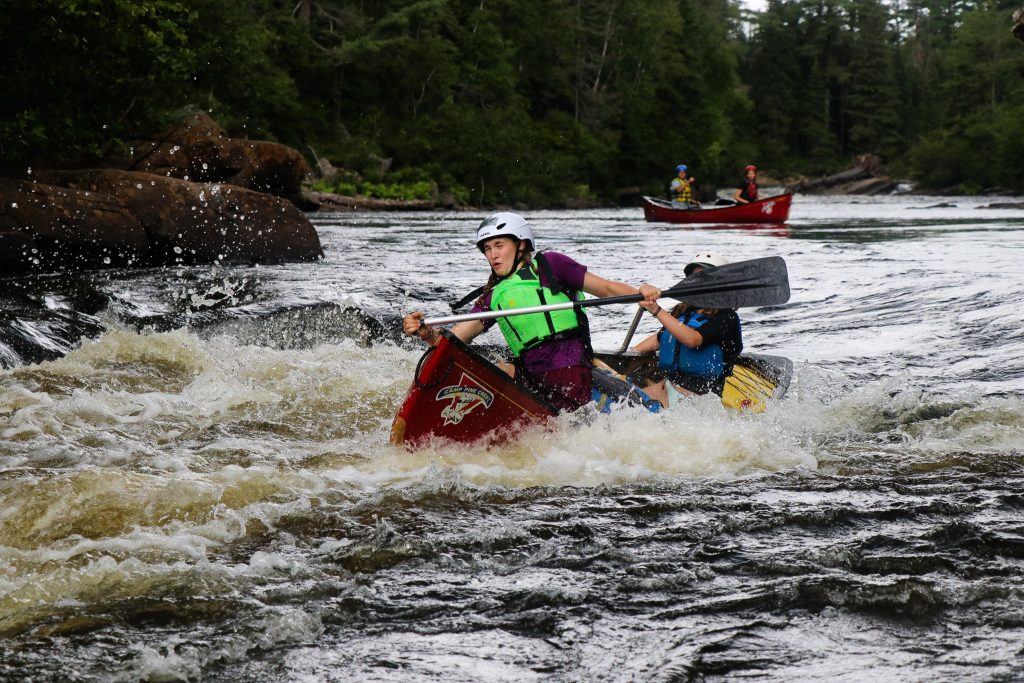
Example: The first video below is from a rapid called Rollaway on the Petawawa River and is considered a Class II Technical. The waves are fairly regular and predictable in the rapid, and they don’t have much volume to them, however, there is enough going on that you could pin a canoe. What makes this a Class II Technical is that there are a lot of shallow and exposed rocks to avoid, so some technical manoeuvring is necessary.
Example: The second video is from a rapid on the Dumoine River. The waves are regular but quite large, sometimes flowing over the gunwales. That said, there aren’t any major obstacles or drops. For these reasons, this rapid is considered a CII.
Example: This next photo is from Cedar Rapids on the Spanish River. The section of the rapid in the photo also is considered a Class II Technical. There’s enough water to flip a canoe if you got broadside and there are tons of obstacles to avoid.
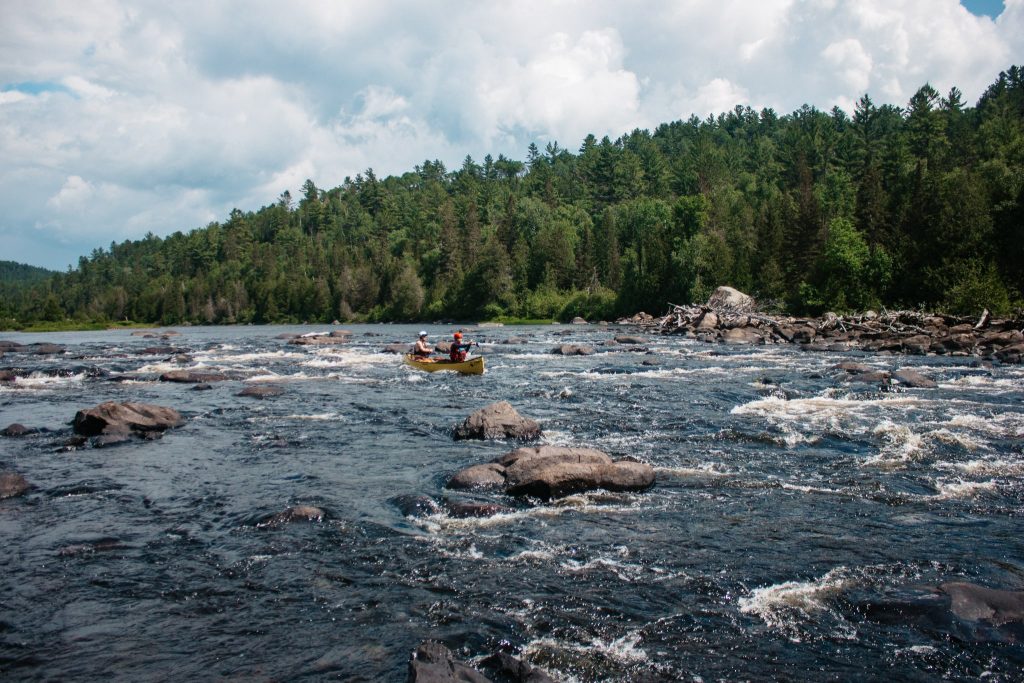
Class III Rapids
Class III rapids should only be paddled by groups that have whitewater rescue experience, since the rapid is more challenging to paddle (more water, greater drops, more obstacles) and rescues can be difficult do to the force of the water. This is typically the highest class of rapid you can paddle in an open canoe on an expedition. Kayakers and rafters can breeze through CIII rapids with much more ease.
📈 Difficulty: Moderate – Difficult
🌊 Water & Obstacles: There will be a large volume of quick-moving water causing high and irregular waves. There are often large rocks to avoid or large haystacks (standing waves). The size of the waves can be extra tricky for open canoes without flotation bags, as the waves will splash over the gunwales and fill the boat with water (called “swamping”).
🔭 Scouting: In the majority of cases, canoes and kayaks will need to scout a CIII. Experienced kayakers and rafters can usually boat scout a Class III rapid they have prior experience with.
⛑️ Rescue: Rescuing a pinned or wrapped boat in a Class III rapid can be tricky, but it’s usually doable. Rescuers will need to be experienced with swimming in rapids, using ropes in moving water and mechanical advantage systems.
Example: The two photos below are from a rapid called 50:50 on the Noire River. As you can see in the photos below, the rapid’s gradient dropped quite a bit and there were a lot of big waves. The first video below is from the same rapid and shows just how turbulent the water was.
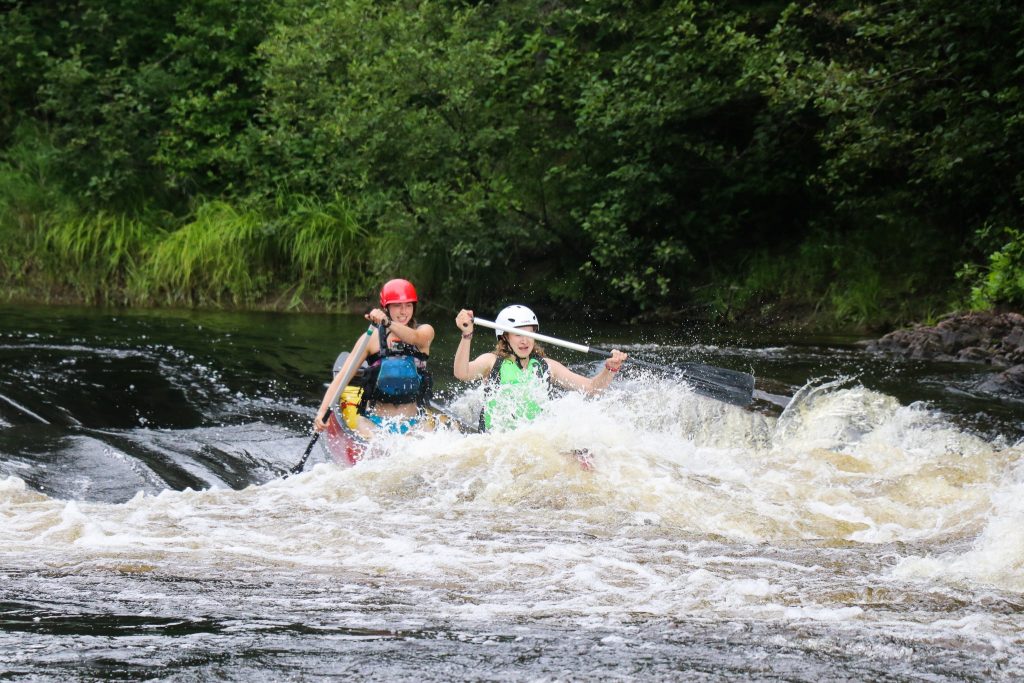

Example: The second video is from a rapid called Big Steel Rapids on the Dumoine River and is considered a Class III. Although there isn’t an obvious gradient drop, you can see that there are high volume, irregular waves and the rapid stretches on for a really long time.
Class IV Rapids
Class IV rapids have TONS of water, HUGE drops and may have dangerous features (like nasty holes). The force of the water is great enough that these rapids should only be paddled by experienced paddlers, regardless of the boat they’re in.
📈 Difficulty: Difficult
🌊 Water & Obstacles: Class IV rapids are characterized by long and powerful rapids with lots of water volume. You’ll likely see huge standing waves, souse holes and boiling eddies – all things that can flip a boat of even experienced paddlers.
🔭 Scouting: In most cases, canoeists and kayakers will definitely scout CIV rapids each time they paddle them. Rafters may be able to get away without scouting on rapids they have experience with.
⛑️ Rescue: Self-rescue is extremely difficult on CIV rapids. If you’re going to paddle rapids like this, you should have other paddlers with you who can assist in a rescue (and all the necessary gear). Remember that getting a swimmer out of a hole or strainer is difficult even for experienced whitewater rescuers.
Example: The photo below is from a rapid on the Madawaka River. The photo is a little bit of an illusion – the river is flowing right-to-left, or the opposite direction to us paddling. After we had paddled through the main channel (where you see the huge waves), we eddied out and are now paddling upriver into calmer water. The waves here were huge and we ran this rapid with an empty boat (a spray deck would have helped) and a group of experienced whitewater rescuers with us.
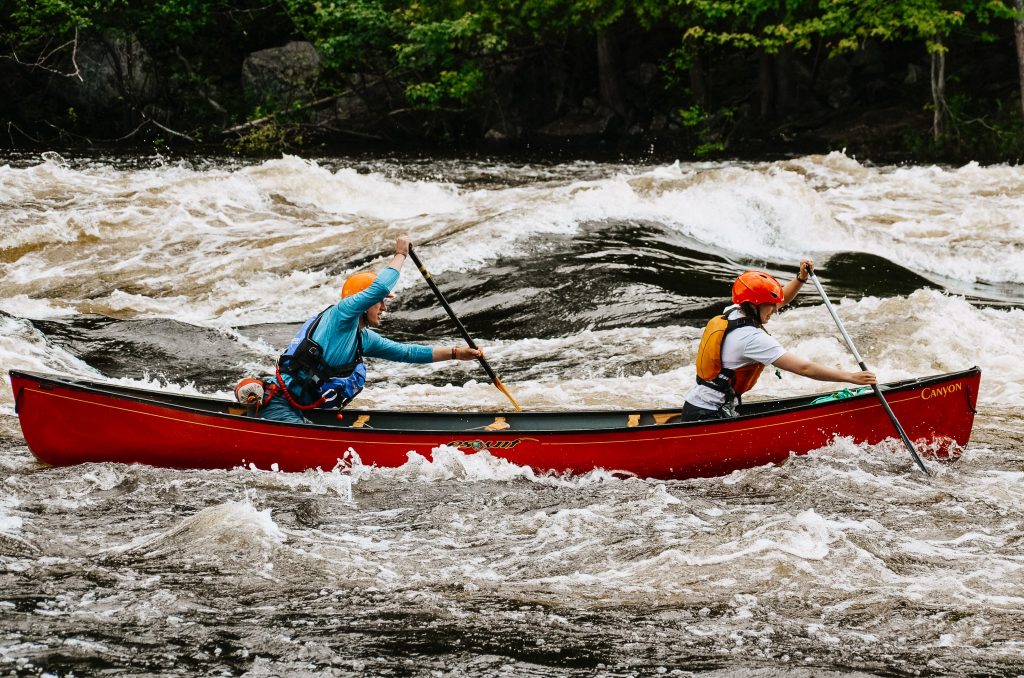
Example: The photo below is from Pond Falls on the Missinaibi River and I believe it gets classified as a CIV (no canoe would ever run it though, so we just call it a Falls). It’s a series of three ledges that have enough vertical drop that a canoe would get swamped even attempting. I think the rocks that create the ledges are probably too sharp for a raft, but I do think there’s a line for a competent whitewater kayaker to get down.
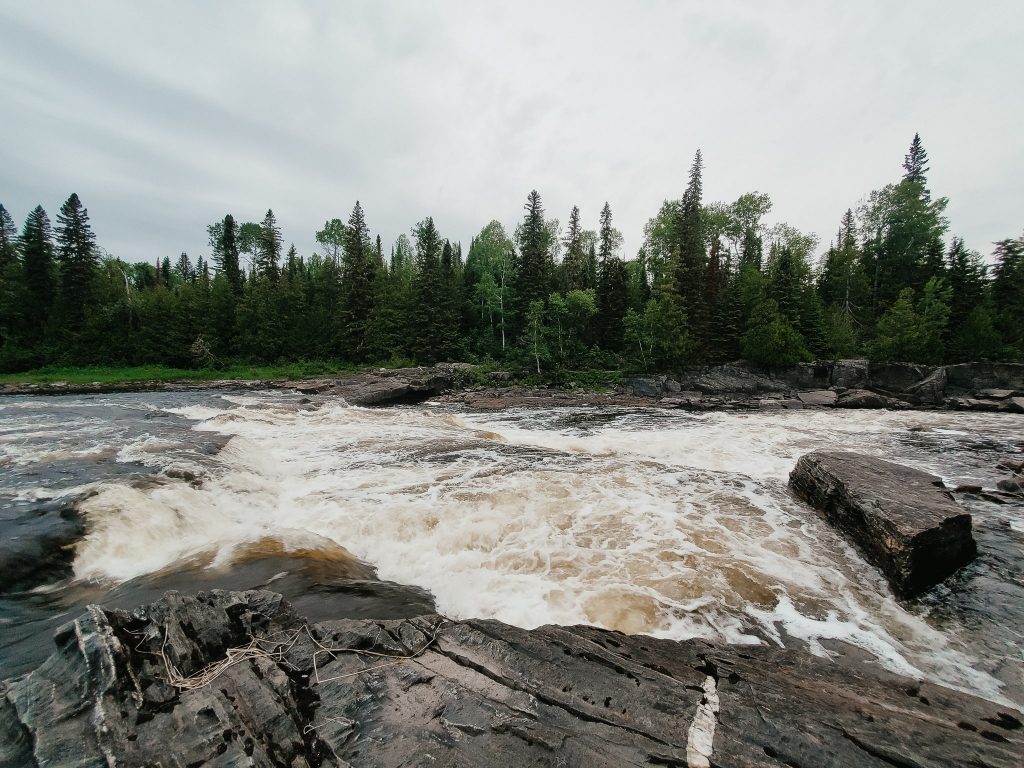
Class V
As a canoeist, I don’t think much about Class V and VI rapids because there is no situation under which I’d run one of those rapids in a canoe. So to me, they’re just short waterfalls. That said, here is what you need to know about Class V rapids.
📈 Difficulty: Extremely Difficult
🌊 Water & Obstacles: So much water. Humungous gradients. There may be obstacles like huge holes or boiling eddies, but even just the force of the water over such a sharp gradient is enough to flip a boat in a heartbeat. They are often long rapids or a series of big rapids in quick succession. They should only be paddled by experts.
🔭 Scouting: Class V rapids always require scouting. They are violent and aggressive and leave no room for error.
⛑️ Rescue: Rescue preparations are definitely needed. You’ll likely want to have multiple people supporting each boat that goes down the river, providing midstream and downstream safety to pull swimmers out. Rescuing a boat from a CV rapid can be extremely challenging.
Example: The photo below was provided by Boreal River Rescue (the company I do all my whitewater certifications with). I’m not sure which river or rapid this is, but judging by the photo I would say it’s a Class V. You can see at the top of the photo that there is a ton of volume and recirculating water. The bottom half of the photo shows just how steep the second drop is. A proficient whitewater kayak or rafter would likely be able to paddle this, but a canoe definitely could not.

Example: The photo below is from a chute on the Noire River. It’s not paddle-able in a canoe, so we portaged, however, I have heard of people kayaking down it. In addition to the gradient drop, there are also a lot of exposed sharp rocks that could flip a boat or injure a swimmer.
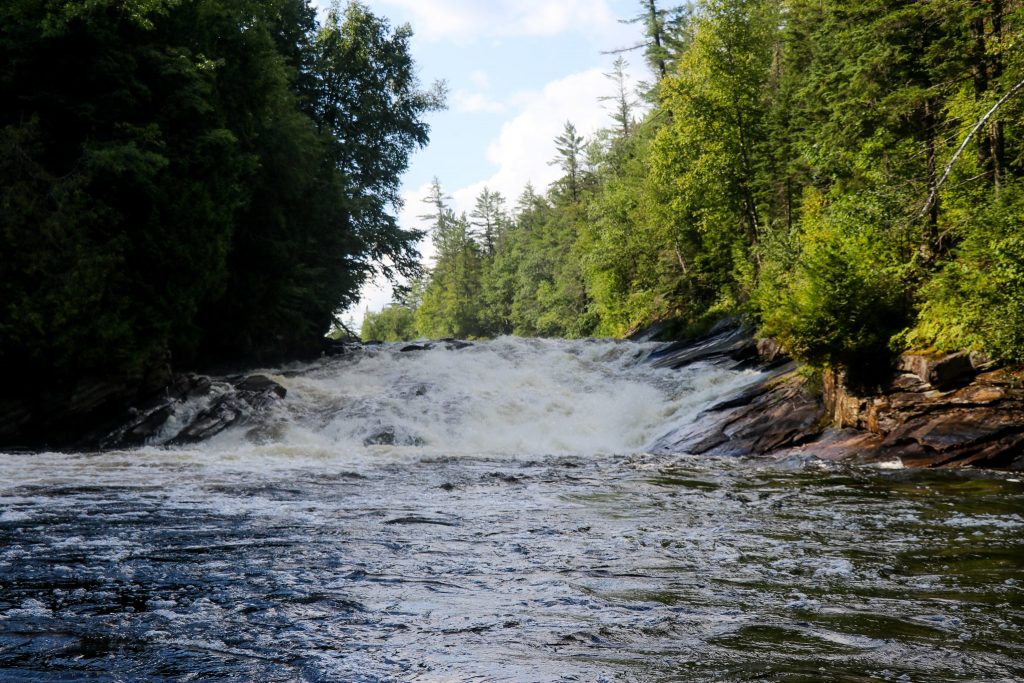
Class VI
Class VI rapids are not commercially raft-able and impossible in a canoe. A few extreme kayakers paddle Class VI rapids, but they are few and far between.
📈 Difficulty: Extreme of the extreme
🌊 Water & Obstacles: Huge gradient drops and huge volumes of water make Class VI rapids extremely dangerous. There will likely be huge souse holes and so much recirculating water that drowning would be almost inevitable if you got caught inside.
🔭 Scouting / ⛑️ Rescue: Scouting is mandatory and often requires a considerable amount of time to study the rapid, find the line, determine all the possible mistakes that could be made and establish a rescue plan for each. In these situations, paddlers often have a team of experienced rescuers around them.
Example? I don’t know if I’ve ever seen a Class VI on a river trip myself, so unfortunately I don’t have a definite photo of one. That said, I do come across this rapid while hiking in Saguenay, Quebec and it looks like a Class VI to me!
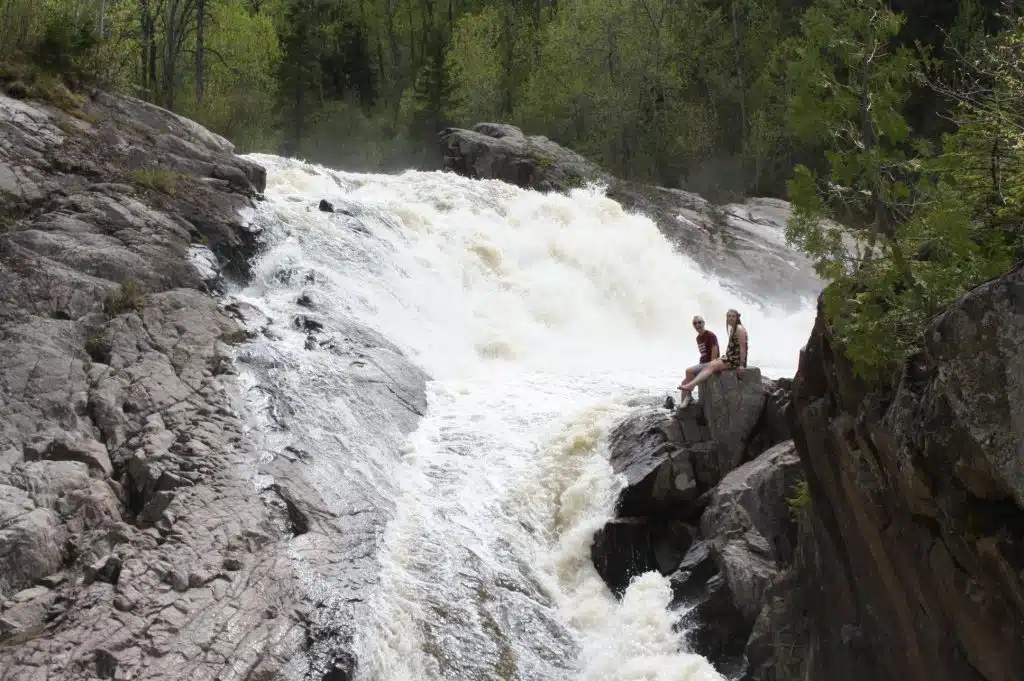
What Class of Rapids Can You Paddle?
The rapid classification you can safely paddle depends on more than just your skill level. I’d generally consider myself to be a competent paddler up to a Class III rapid in a canoe (granted the rapid doesn’t require a back ferry) and a strictly flatwater paddler in all other boats. But even in a canoe, whether or not I can safely paddle the rapid in front of me comes down to a few factors.
🚣♀️ Type of Boat
I’ve already discussed this above, but just to reiterate: each of the three main types of whitewater boats behaves in rapids differently, and thus can do different levels of rapids.
At the far end of the extreme, we have whitewater kayakers. These boats are extremely manoeuvrable and can right themselves if flipped upside down. Kayaks don’t really have a limit on what they can be paddled in (for example, read my interview with Dane Jackson about kayaking off waterfalls).
Next, we have whitewater canoes. Canoes aren’t as manoeuvrable as kayaks, so tight turns require a lot of skill to navigate. But the biggest difference is that they have an open hull. Big splashes and big tilts fill the hull with water and make the canoe difficult to keep upright. A full tip is impossible to right. For those reasons, most people draw the line around Class III, maybe a Class IV if they’re extremely skilled (and a daredevil).
Finally, we have rafts that have very little manoeuvrability but can plow through huge volumes of water. As long as the rapid isn’t narrow or filled with lots of obstacles, rafts can be paddled through Class V rapids.
Read More: What’s the Difference between Whitewater Kayaking, Canoeing and Rafting
🪨 What is at the End of the Rapid?
Major Obstacles
If you were to tip at any point in the rapid, where would you end up? You need to think about what is downstream of the rapid you’re paddling in the event that you tip. There is a huge difference between paddling a Class I rapid and a Class I rapid upstream of a waterfall. The consequences of tipping are much more serious.
More Moving Water
In places like Ontario, Quebec and Manitoba, many of the rivers are “drop and pool”. That means you have a sudden drop (rapid) followed by a pool of flat water. This is in contrast to northern rivers that often have a constant gradient drop, meaning you can paddling in a seemingly never-ending string of rapids and moving water.
If you tip on a ‘drop and pool’ river, eventually the current will slow down and you can only be carried so far. And it’s likely you’ll be able to retrieve all of your gear at the bottom. Meanwhile, on a northern river, there is no pool to catch you and your gear.
Visibility
One final element to consider is whether you can see to the end of the rapid. If the rapid is very long, with lots of twists and turns, you may not be able to scout all the way down the rapid. Even talented paddlers have trouble paddling Class II / Class III rapids when they are unable to scout them.
👪 Group Whitewater Experience
The level of experience your has is a huge factor in what you can safely paddle. If most people in the group are experienced paddlers with whitewater rescue experience, you can feel confident that if something goes wrong, you have help.
For example, the class of rapids I can paddle is drastically different when I’m guiding campers than it is when I’m paddling with my group from the Wilderness Canoe Association. The campers have little whitewater experience and absolutely no rescue experience. The WCA paddlers are all extremely experienced (much more than I am) and all have rescue training.
If you’ve watched my trip video about the Dumoine River, you’ll see that we ran just about everything (usually without much scouting). This was because we were all great paddlers and knew whitewater rescue.
Read More: Swiftwater Rescue Training: Everything You Need to Know
🌲 Level of Remoteness
My risk tolerance decreases the further I am from help. When I was last on the Madawaska River, which is close to several towns and has plenty of emergency access roads, I paddled rapids that were far beyond my skill level. In the event of a rescue, help isn’t far away (plus I was with a group of other competent rescuers).
On the other hand, I don’t push my limits nearly as much if I’m in a remote area where help will take a long time to arrive if something goes wrong.
📊 Energy Levels
Safely navigating difficult rapids requires a lot of focus and risk management. Both of those things are difficult when I am tired or frustrated after a long day. I typically don’t paddle Class III rapids in the late afternoon – my energy levels are too low for me to make good decisions and execute a rescue effectively if there was to be a tip.
How to Paddle Higher Classes of Rapids
If you’re interested in paddling higher classes of rapids, I recommend checking out these resources:
- How to Get Started in Whitewater Canoeing
- Swiftwater Rescue Training: Everything You Need to Know
- A Beginner’s Guide to Scouting Rapids
Ultimately, you just need to get lots and lots of practice in a supervised setting.
Whitewater Classification – Final Thoughts
I hope this has been helpful and you have a better understanding of rapid classes. Please always paddle within your abilities and follow all safety precautions (wear your helmet!).
Also, I’m thinking about leading some guided whitewater canoe trips (and backpacking trips!) in an upcoming season. If you might be interested in joining, add your email below. I’ll be sending out a form to gauge interest, location and experience preferences.
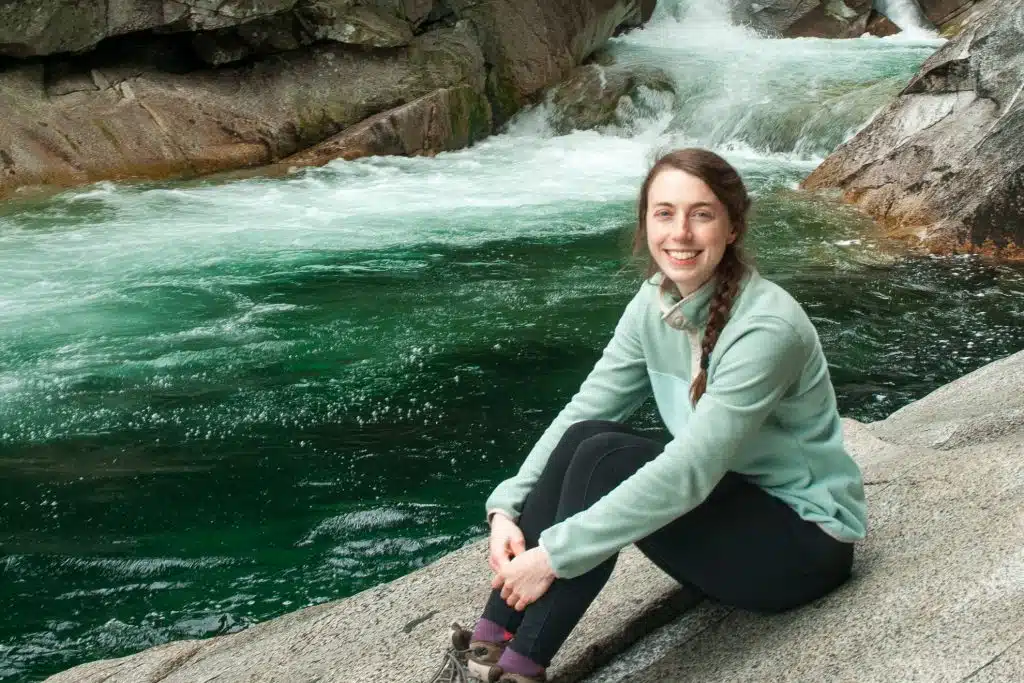


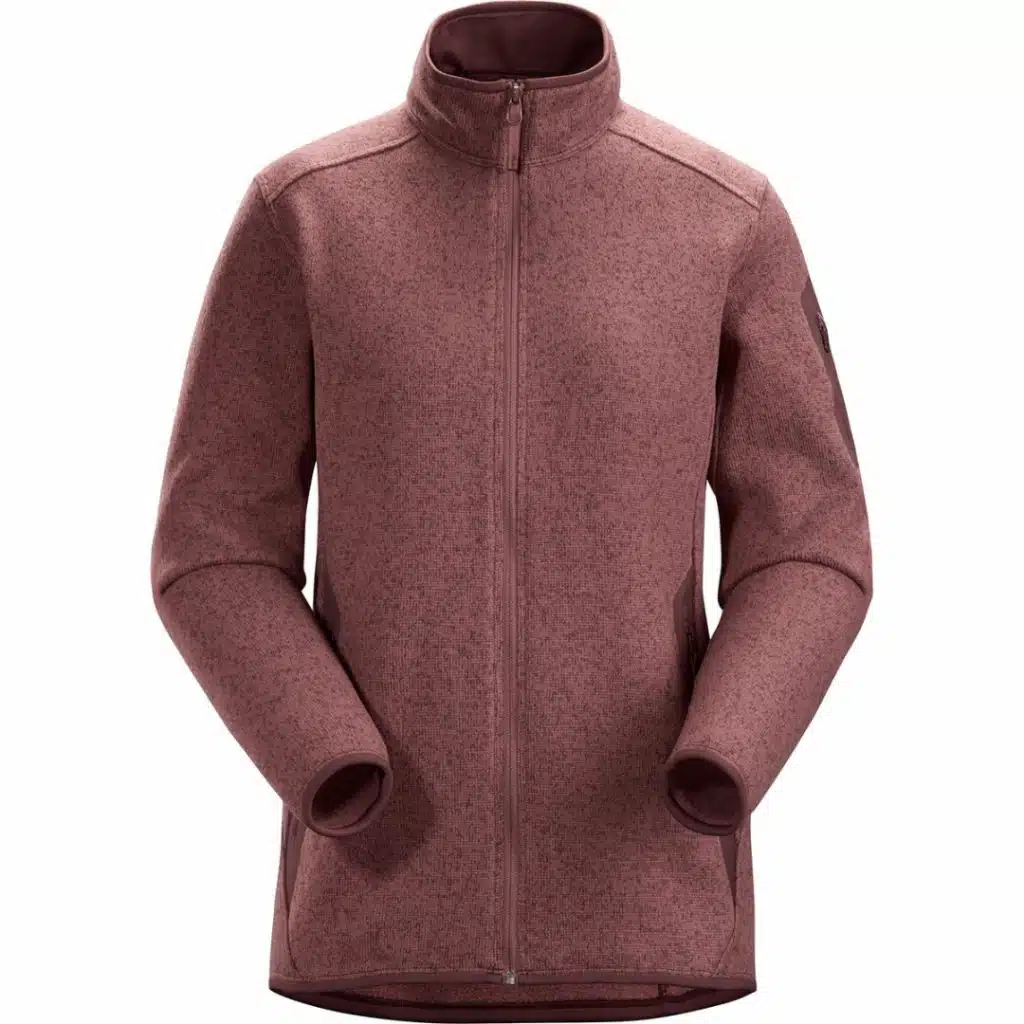
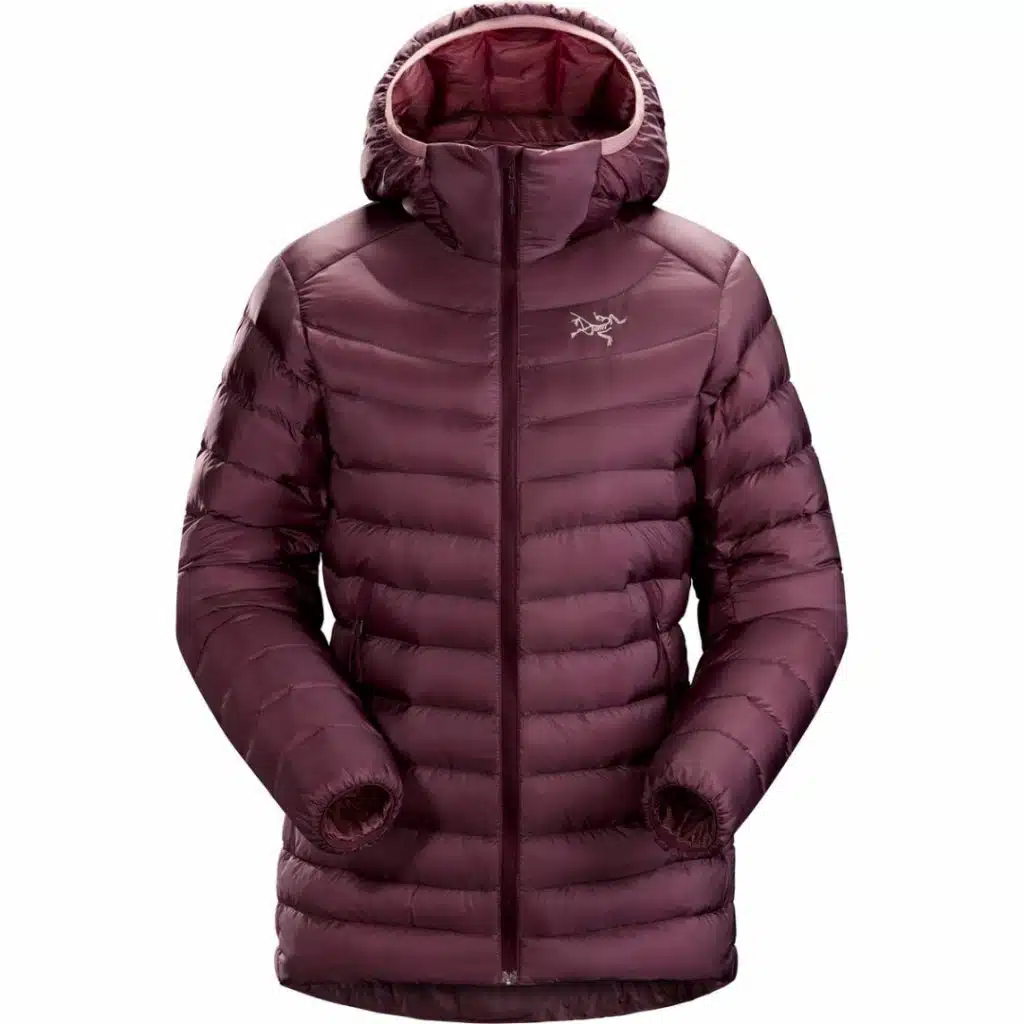
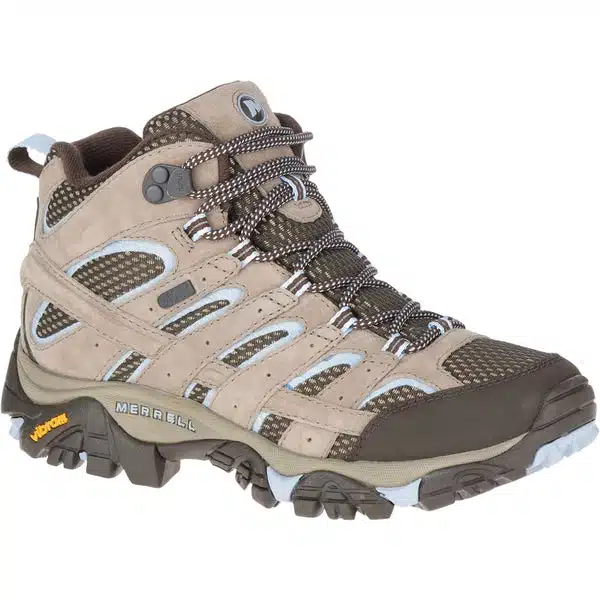
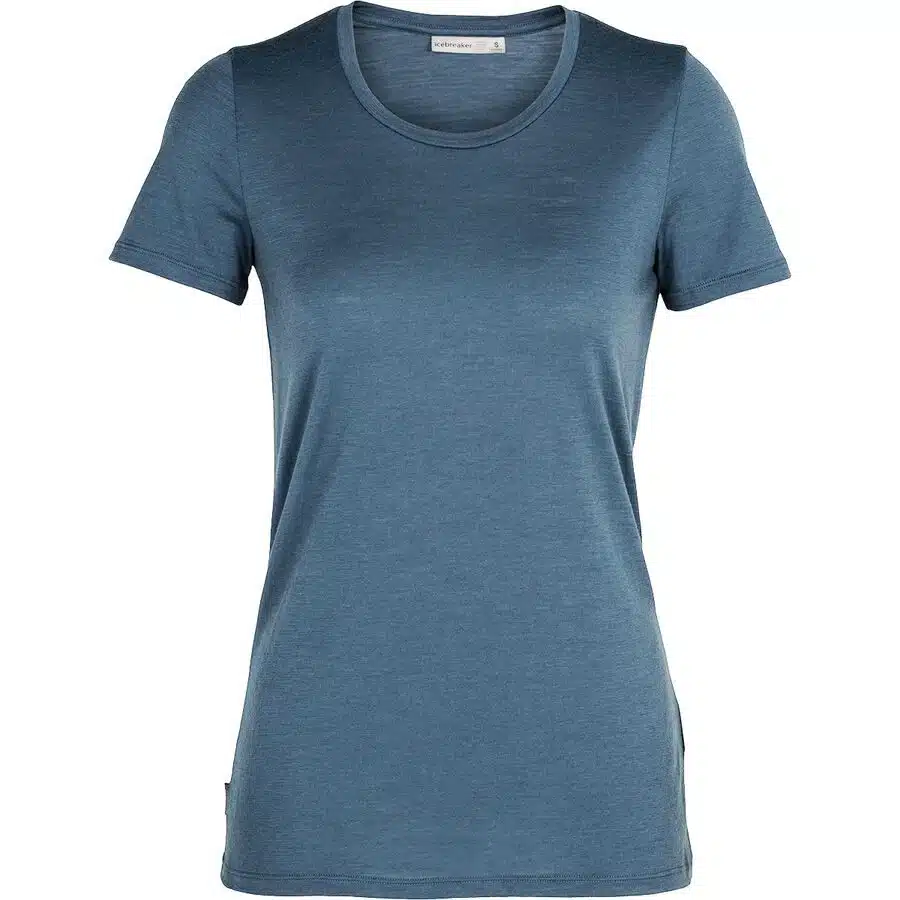
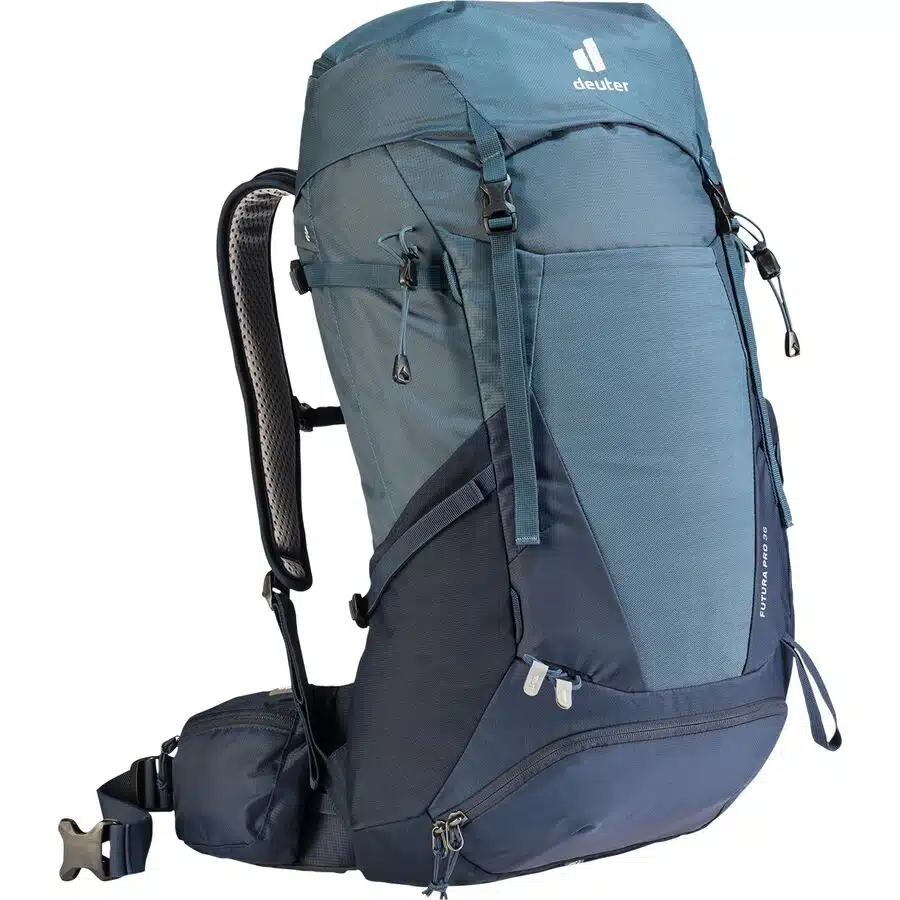
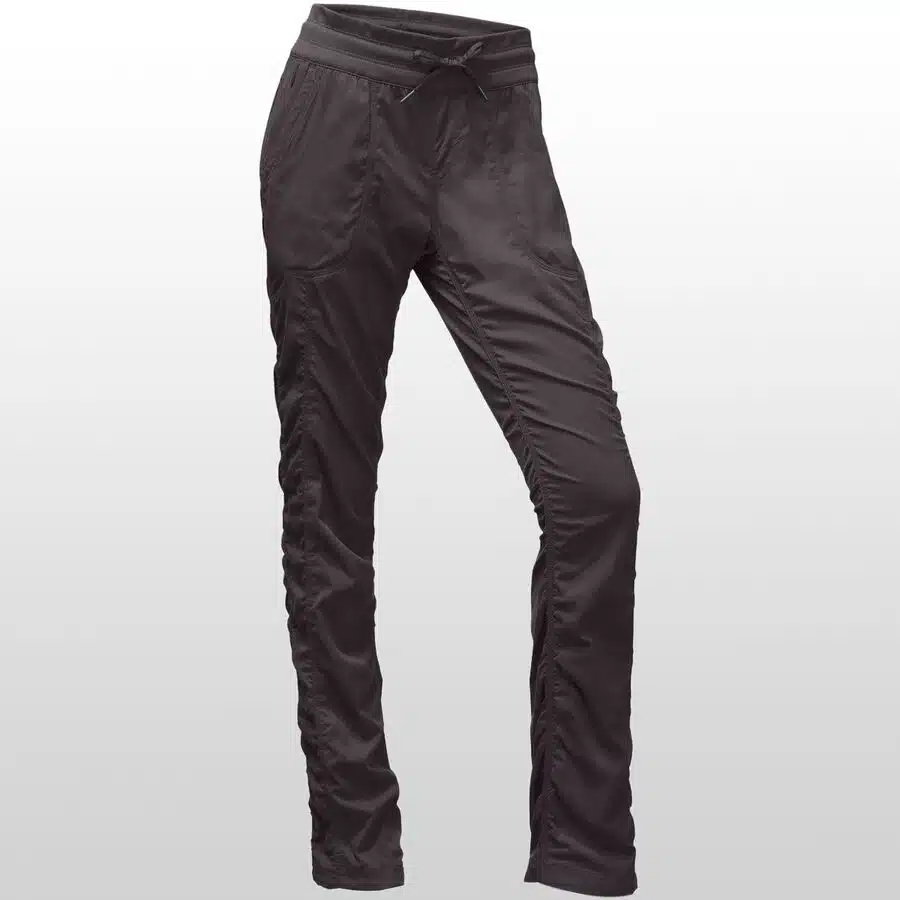
Stay in Touch
Join our community of outdoor adventurers - you'll find trip inspiration, gear discussions, route recommendations, new friends and more!
Thanks for the post! Very informative. If you do decide to do some guided trips in Ontario I’d definitely be interested in learning more about them. Thanks again!
Thanks Mike! I’m glad you enjoyed the post!